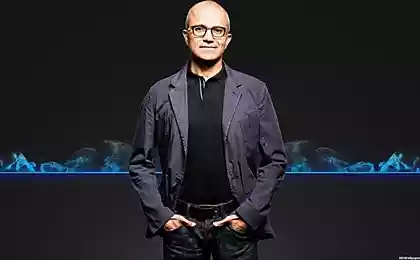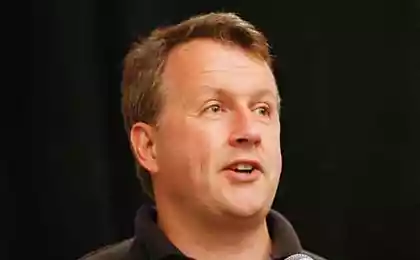276
How to understand how money works in our world, how to start earning

Money is more than just pieces of paper or numbers on the screen. These are opportunities and freedom of choice. Every young person sooner or later faces the need to learn how to earn and use them correctly.
How Money Really Works in the Modern World
Today, more financial opportunities are available to young people than ever before. But despite the abundance of information, few people really understand how money works.
The most important thing to understand is that money is a way of exchanging value. They flow from those who create less value to those who create more. This is the basic rule of modern economics.
Three simple laws of money:
- Value lawThe more you do for people, the more money you can make.
- Law of scaleThe more people you help, the higher your income.
- The law of leverUsing technology, people, or capital can multiply your performance.
With each new technological leap, new forms of money emerge. We went from coins to bank cards and from coins to digital currencies. But the main task of money remains the same: to show who created how much value.
The modern financial system can seem very complex, with its exchanges, banks, funds and cryptocurrencies. But the bottom line is simple: money must move effectively from those who don’t need it now to those who can use it to create new value.
Where does money come from: the main sources of income
There are several main ways to earn money, and it is important to understand them in order to choose the right one for yourself.
1. Selling your time and skills
The easiest and most affordable way to earn money for young people. This is employment, freelancing or providing services. The main disadvantage is that your income depends on the time you spend.
How to increase income from work:
- Master the required skills: programming, design, marketing, sales
- Invest in educationwhich will actually increase your income
- Choose growing industriesTechnology, Green Energy, Healthcare
- Expand your connections. and create a personal brand

2. Passive Income: Money Works for You
This is income that requires minimal participation after the initial investment. This includes interest from deposits, dividends, income from the delivery of real estate, royalties.
Passive income rarely comes out of thin air. First you need to create something valuable or accumulate capital. Book authors write them first, property owners buy them first.
3. Investment income: investments that grow
This is income from investments in stocks, bonds, funds and other financial instruments. It requires a basic knowledge of finance and an understanding of how to manage risk.
Research shows that young people who start investing at least small amounts in their 20s and 25s gain a huge advantage through time and compound interest.
Where to start: A simple plan for beginners
The path to financial independence is a marathon, not a sprint. It is important to move step by step without trying to jump through the stages.
Step 1: Building the base
- Make a list of your income and expenses. Write down everything you have, including debts. Be honest with yourself.
- Start tracking expenses. Simply tracking spending already reduces useless purchases by 15-20%.
- Create a stock of money 3-6 months of normal expenses. This is your airbag that will give you confidence and the ability to take risks in the future.
- Learn financial literacy. Read books, listen to podcasts, take courses.
Step 2: Increase basic income
Your main income is fuel for growth. The more you earn and invest competently, the faster you can create additional sources of income.
How to increase basic income:
- Identify skillsThey will be in demand in the next 3-5 years, and develop them.
- Combine different skills: for example, technical + creative (programming + design, video editing + marketing).
- Develop parallel earnings: main work + part-time work or your own project.
- Don't sit in one place for yearsStudies show that people who change jobs every 2-3 years earn an average of 50% more.
Step 3: Learning to invest
Investment is a bridge between active and passive income. They turn the results of your labor into assets that will generate income for years.

Start with simple investments that suit your age and risk-awareness:
- Index funds: Perfect for beginners. A simple way to invest in many companies.
- Stocks: buying shares in companies. They require more analysis, but they can generate more revenue.
- BondsEssentially loans to companies or governments. Less risk, but also less return.
- Alternative investments: cryptocurrencies, objects of art. High risk, but also the possibility of great growth.
To find out how many years your money will double, divide the number 72 by the annual percentage of return. For example, at 8% per annum, your investment will double in about 9 years (72 ÷ 8 = 9).
Step 4: Create multiple sources of income
Research shows that the average millionaire has at least seven different sources of income. Diversity creates resilience and accelerates prosperity.
Options for additional sources of income:
- Small business. with minimal investment (sales via the Internet, creation of information products).
- Digital goodsContent, applications, templates that can be sold repeatedly.
- Turning Hobbies into Income: sale of handmade products, lessons on instruments, etc.
- Using your skills at different venues and for different audiences.
The Rich Mind: How Successful People Think
Financial success begins with the right mindset. Studies show that successful people think in a particular way:
How Financially Successful People Think:
- See opportunities, not obstacles. They believe that resources and opportunities are sufficient for everyone.
- Thinking about the future.. They are willing to give up pleasure now for a better life later.
- Not afraid to take risks.. They understand that without risk there is no growth.
- Always learning. Knowledge is considered the best investment.
- Building systems. They create processes that work automatically.
It is important to understand that to change your financial situation, you must first change your beliefs about money. What thoughts about money did you get from your parents? Which ones help you grow and which ones hinder you?
Bottom line: How to start changing your life
Financial literacy is a lifelong journey. If you are just beginning this journey, remember: money is just a tool to achieve your goals and dreams.
Real wealth is not just the numbers on the account, but the freedom to choose what to spend your time on, with whom to spend it and what mark to leave in the world.
Start small with one simple step toward financial awareness. And remember, most of the fortunes in the world were not created by chance or luck, but by constant, thoughtful action.
dictionary
Active income
The money you get for your work or services. No work - no money (salary, fees, fees for services).
Passive income
Money that comes to you regardless of whether you are currently working or not (interest from deposits, dividends, income from renting an apartment).
Investment
Invest money, time or other resources now to get more in the future.
Diversification
“Don’t put all your eggs in one basket” is the distribution of money between different investments to reduce the risk of losing everything.
Compound interest
When you receive interest not only on the original amount, but also on previously accrued interest. Makes money grow faster over time.
Financial independence
A state where the return on your investment covers all your expenses and you no longer have to work for the money.
Leverage (leverage)
Using other people’s resources (money, time, labor) to increase your own results.
Return on investment
The indicator of how much money you will receive for each invested ruble.
Index fund
A method of investing in which your money is automatically distributed among many companies in a particular index (for example, the top 500 companies).
Financial security cushion
A stock of money sufficient to live without a basic income for 3-6 months. Protects against unforeseen situations.
Fillers for rejuvenation: advantages, types and rules of choice
8 Signs Your Body Gives When It Needs a Break























